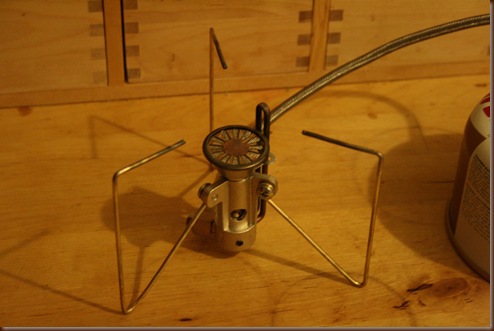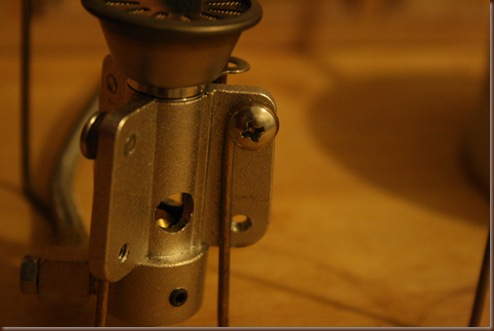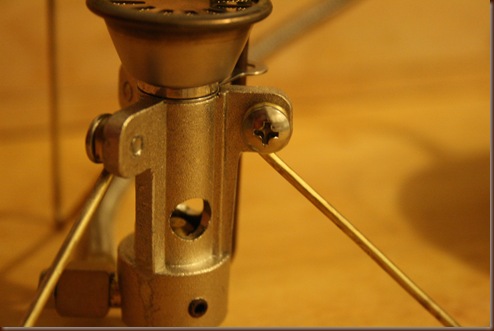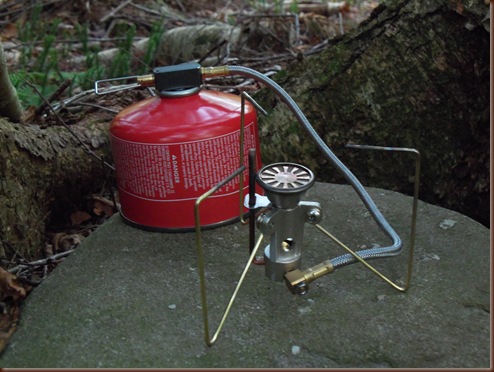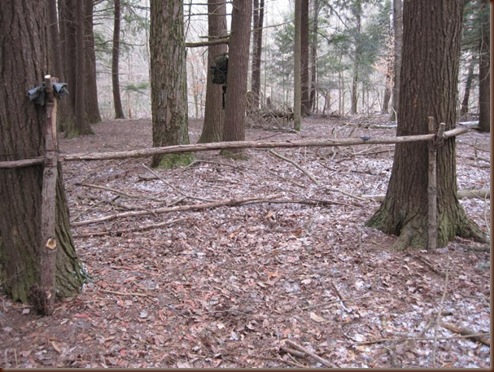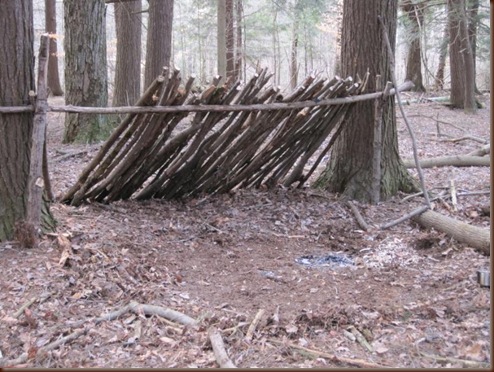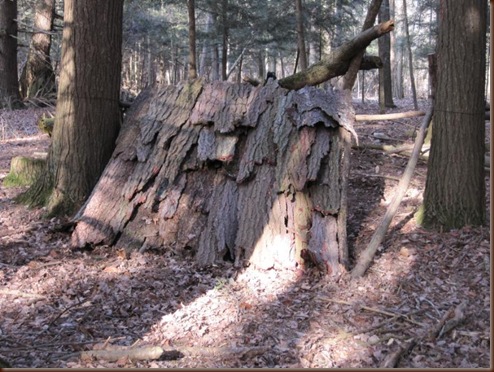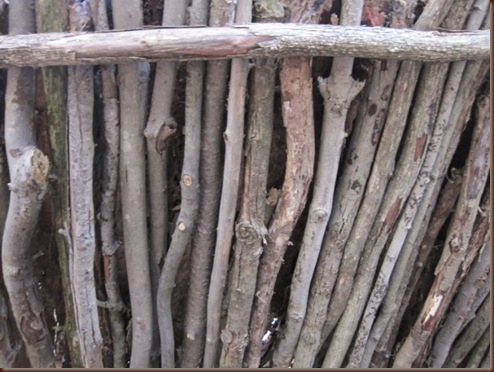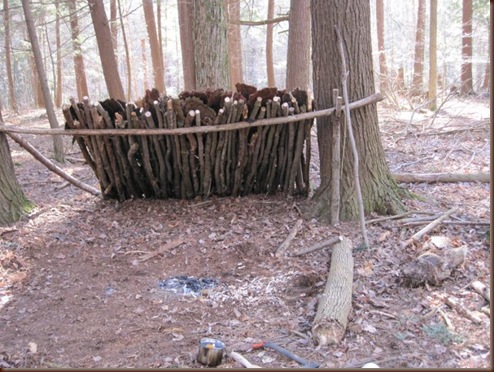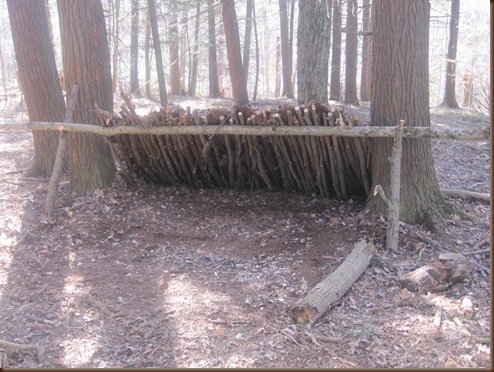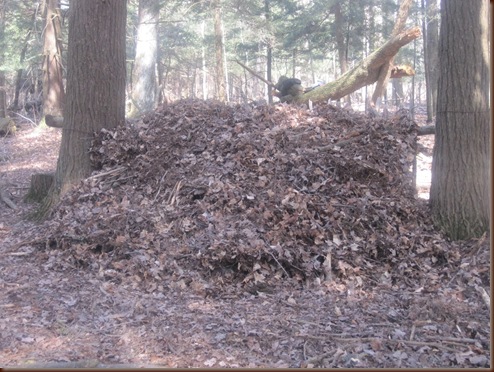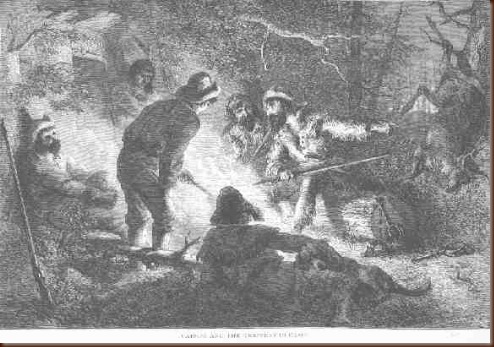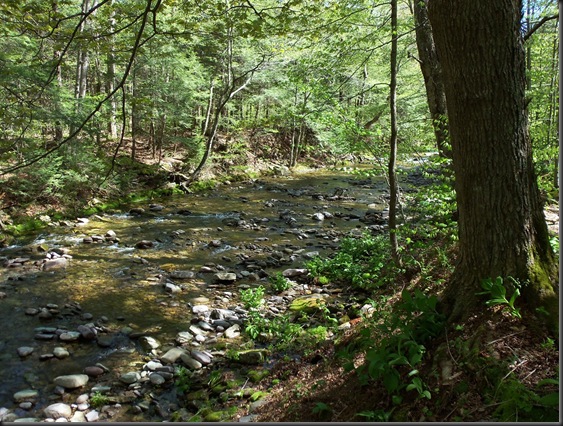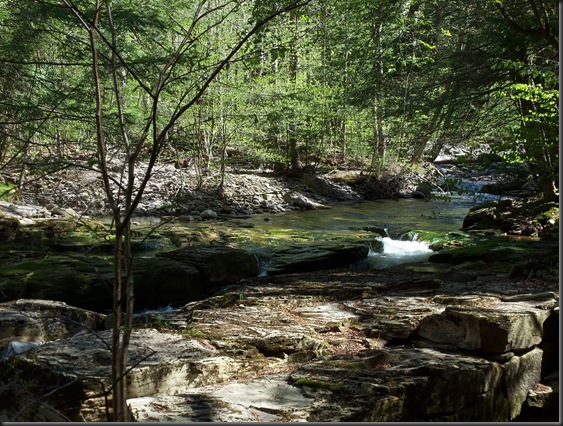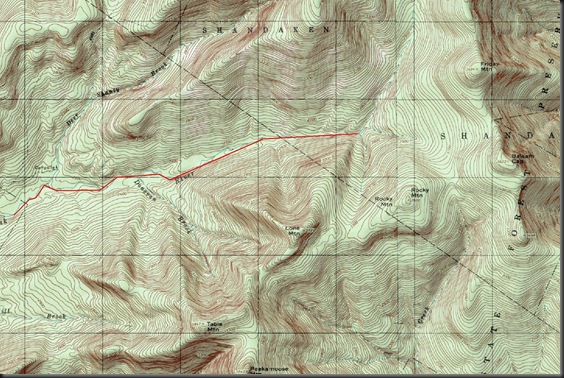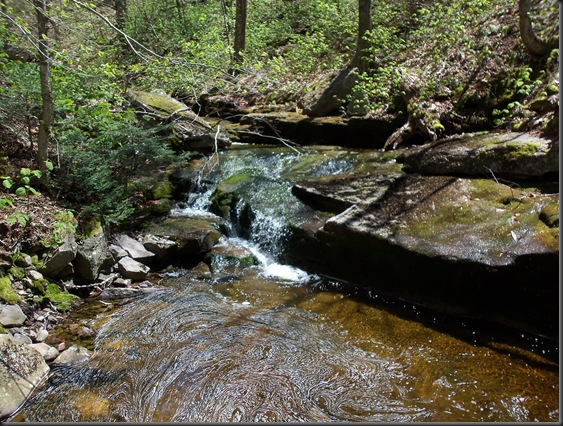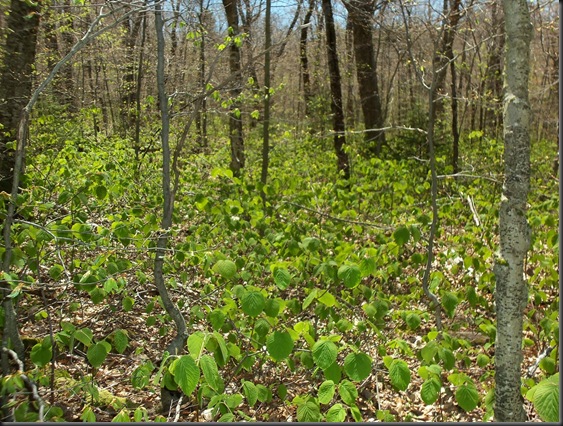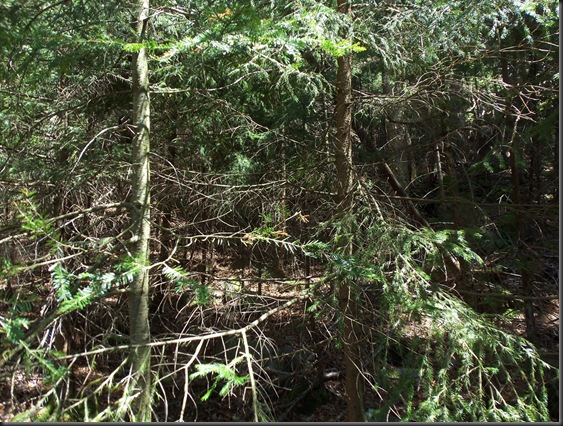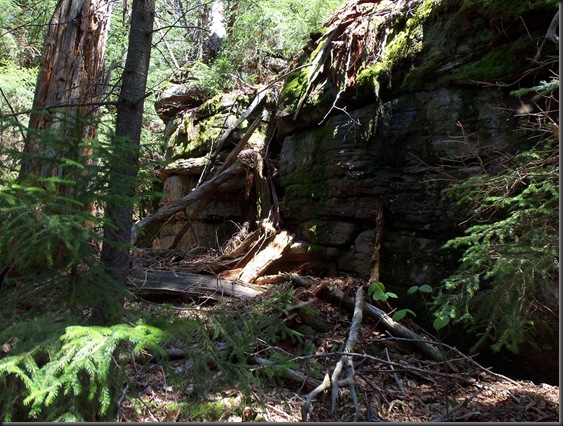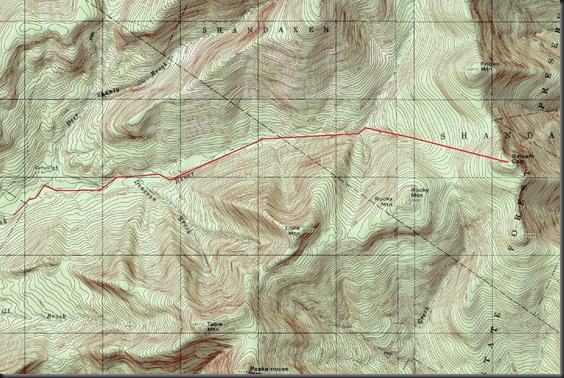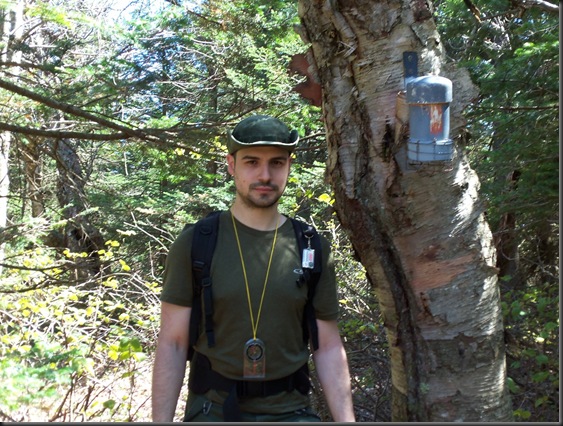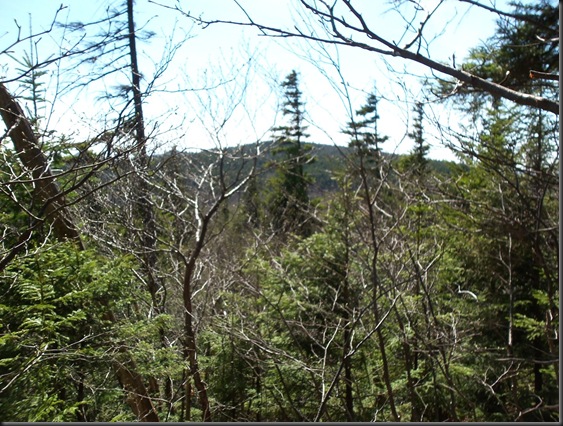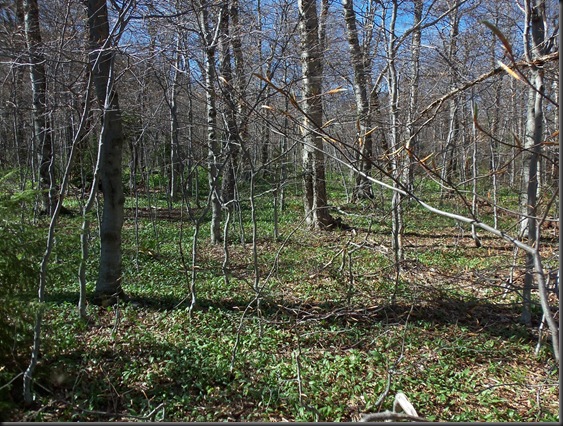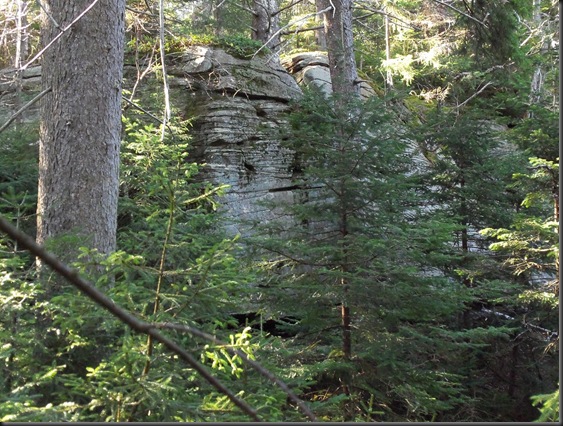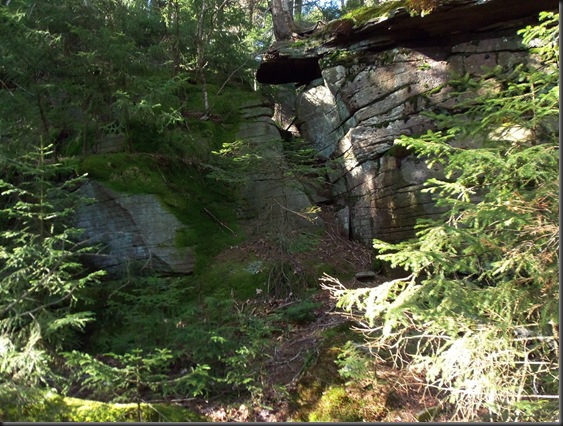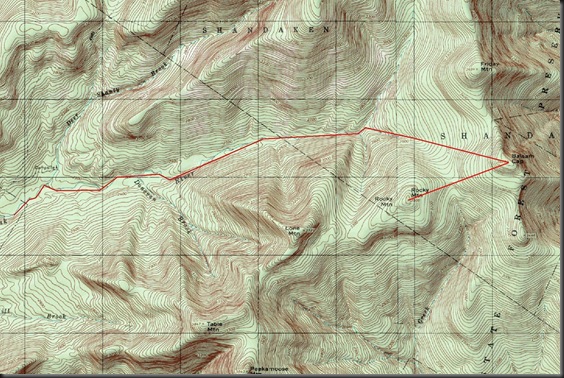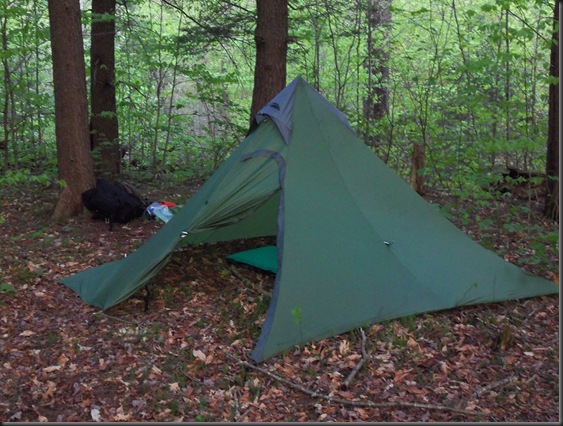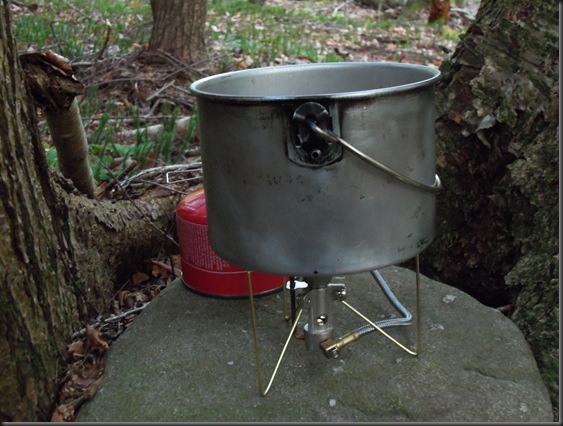Thursday, May 31, 2012
Recipe: Jubilee Queen of Puddings
Queen of Puddings is a British Classic, and to celebrate the Queen's Jubilee the pudding was adapted. Cherries Jubilee was invented for Queen Victoria's Diamond Jubilee. I decided to take this idea, and spread a layer of Cherries Jubilee on the pudding base. I only hope the Queen doesn't mind that I messed about with a classic pudding, otherwise it could be the Tower for me.....
This pudding never looks the prettiest when served up, but a tip is to serve the pudding when it is lukewarm, this way the custard base has a chance to set again. For presentation, individual puddings win every time. No piped meringue, simply dollop the whisked egg whites into the centre, spread out towards the edges of the dish and swirl with a spoon.
Serves: 4-6
For the pudding:
90g fresh breadcrumbs, 2 tbs soft brown sugar, 450ml whole milk, 1 lemon(zest only), 1 tbs caster sugar, 25g salted butter, 3 large eggs(yolks only, the whites will be used for the meringue)
For the topping:
350g jar pitted cherries ( I buy mine from Lidl), 2 tbs sugar free cherry jam, 1 tsp brandy, McDougalls Thickening Granules. 3 large egg whites, 75g caster sugar
1. Preheat the grill to medium setting. Sprinkle the breadcrumbs and brown sugar onto a roasting tray and mix together. Grill the breadcrumb mix until the breadcrumbs are lightly toasted. Put on one side to cool.
2. Preheat the oven to 150°C/300°F/Gas 2.
3. Heat the milk, lemon zest, sugar and butter together in a pan over a medium heat. Stir until the butter has melted and the mixture is combined. Stir the toasted breadcrumbs and caster sugar into the milk mixture. Put to one side to cool for 30 minutes.
4. After the breadcrumb mixture has cooled for 30 minutes, whisk the egg yolks in a bowl until pale and fluffy, add them to the milk and breadcrumb mixture and whisk until combined.
5. Pour the pudding mixture into a 20cm ovenproof serving dish and bake in the oven for 50-60 minutes until the pudding has risen and set.
6. Drain the cherries(reserve the juice), add to a small saucepan, stir in the cherry jam and two tablespoons of the reserved syrup. Heat gently until the jam has melted, add a teaspoon of thickening granules and stir until thickened, add the brandy. Cool slightly. Spread over the pudding layer.
7. Whisk the egg whites until the soft peak stage, add the sugar a little at a time whilst still whisking. Continue to whisk until the mixture is glossy and stiff peaks form.
8. Spoon the meringue over the pudding and return to the oven for 40 minutes until the meringue is golden brown.
The Bushman Axe by Les Stroud
Next month, Wetterlings will be introducing a new model axe, designed in collaboration with Survivorman, Les Stroud.
The axe will be available for sale sometime in November, according to Wetterlings.
Judging from the picture, it is an interesting design. The poll appears to have been reduced in size, and possibly rounded like we see on the GB Hunter’s Axe. This was possibly done to aid in skinning tasks. I am not sure how that will effect the balance of the axe. The smaller poll will also likely make tasks like pounding in stakes a bit harder.
I like that they have used a less finished handle design. I am not sure if this will be the same as the final product, but if so, it will go a long way towards demonstrating that axes are not much harder to hang in the woods than a hawk. It will however most likely be replaced by a more highly finished handle, a picture of which can now be seen on the Wetterlings website.
I would love to get my hands on one of them when they finally go on sale. I am usually not a big fan of celebrity designed axes, but it’s always fun to see what little special things each person values in their tool.
Wednesday, May 30, 2012
Foundry Photojournalism Workshop: My Multimedia Class: The Quick And Easy
This will be the 5th time I am to teach at the Foundry, and I'm thrilled to have been included since its inception in Mexico City in 2008.
I will teach a multimedia class that allows its participants to concentrate on their stories, rather than on the application. The purpose and aim of the class is to show photojournalists how to make quick work of slide show production, using their own images and audio generated in the field, to produce a cogent photo stories under the simulation of publishing deadlines. Most of the class’s time will be spent photographing in the field, while indoors time will be devoted to weaving the material into photo stories.
This class will require participants to produce two short (about 3 minutes -or less- each) photo stories: one of human interest (narrative and preferably in monochrome), and the other thematic
(travel-documentary for example, and in color).
Participants will be required to use Soundslides (or iMovie) software, and Audacity for audio. Participants must have Digital Audio Recorders (such as the Zoom H1). Soundslides can be downloaded in its trial format, while Audacity is a free sound editor.
Fuji X-Pro1 Goes Globe Trotting
How could I have I missed this?
Fujifilm and British luxury luggage manufacturer Globe-Trotter have joined forces to create an exclusive travel case and X-Pro1 camera package that takes the "limited edition" tag to its extreme. It's restricted to Harrods, and only 12 are available for sale at £5,695 ($ 8800 or so). Since all of the camera hardware can be bought from B&H for about $3800, the travel case on its own probably costs in the vicinity of $3000 (adjusted for VAT).
Each travel case contains a Fujifilm X-Pro1, its three lenses, a flash and a filter. No mention of a handful of SD cards thrown in.
Since Britain is celebrating the Queen's Jubilee this week, here's another bit of useless trivia for you: Queen Elizabeth II purchased her Globe-Trotter suitcases for her honeymoon from Harrods. She probably still uses them.
This is a page out of Leica's playbook. Targeting the very wealthy who seek status symbols, while probably knowing very little of photography. I bet we'll be seeing more of this luxury "packaging" in the future for both Leica (as it usually does) and the upstart X-Pro1.
Tuesday, May 29, 2012
Review: Montezuma's Monkey Bars
Montezuma's, a British family owned chocolate company, have sent me a huge Monkey Bar to review. Iconic symbols of Great Britain decorate the packaging including Black Cabs, London Buses, a Telephone Box, Welsh Dragon and a Scottish Lion. They are decorated with the skyline of London too.
My slab of chocolate, would you Adam & Eve it (believe), is made from Venezuelan milk chocolate with orange and hazelnuts. The chocolate bar is made from thick chocolate, and good news, you don't have to go into battle with the chocolate to bite into it. The orange flavour isn't overwhelming and the chocolate has been finely tuned for sweetness. Also, there is a generous scattering of the most delicious whole hazelnuts.
The bars are bigger than an iPad and will be fabulous to share, or as we are doing, sitting outside and eating a piece in the glorious sunshine. Hubby has just bought some new technology which isn't user friendly, eating the chocolate is helping........
Why Monkey Bar? Cockney rhyming slang for '500' is monkey! - these bars of chocolate weigh in at 500g or a half-kilo.
Montezuma's are celebrating this very British year with five different flavoured bars of chocolate:
Airs & Graces (races) - Ecuadorian Dark chocolate with Nougat Pieces.
Nanny Goat (boat) - Venezuelan Milk Chocolate with Salted Peanuts & Butterscotch.
Daisy Roots (boots) - Ecuadorian Dark Chocolate with Cherry & Almond Slices.
Shake & Shiver (river) - Ecuadorian Dark Chocolate with Peppermint & Cocoa Nibs.
RRP £13.99 each.
The brand: A family owned British chocolate company founded in 2000 by Helen and Simon Pattinson. They have built a reputation for producing some of the most innovative chocolate available in the UK.
Visit www.montezumas.co.uk to find out more.
Thank you to Montezuma's and Martin for the wonderful chocolate.
Kovea Camp 5 Stove Modifications Continued…
As you guys know, after the initial modifications to my Kovea Camp 5 stove, I continued thinking about some other possible modifications. I think that I now have what will be the final version of the stove, and I wanted to share it with you.
I have made two modifications. The first one was suggested by a reader here, and it is to remove the long, flat surface from the bottom of the legs and make them reach the ground at a point. This would eliminate the possibility of the legs being effected by uneven ground.
The second modification was to remove some of the metal from the sides of the stove where the old legs used to be attached.
Here is what the leg supports looked like before:
And here is what they look like now, after the modifications:
It turns out the body of the stove is made from aluminum, so removing the metal was easy to do. All I used was a manual hack saw and a file.
I don’t think here are any other modifications I can do to the stove, so this will be the final product.
As mentioned before, because the stove is so light, it can be unstable without a pot on it. I have used this version in the field several times, and it has performed very well. After all the modifications, the stove currently weighs 4.7 oz. As far as I know, that is lighter than any commercially available remote canister stove.
Of course, modifying a stove can be dangerous, and I’m sure it is not recommended by the manufacturer, but I’m happy with the results in this case..
Chico Sanchez: The Dresser
 |
| Photo © Chico Sanchez-All Rights Reserved |
To break the recent string of India and Asia related posts, here is The Dresser, an audio slideshow by Chico Sanchez, a freelance photographer based in Mexico City.
The Dresser is Cesar Diaz, a professional dresser (el vestidor in Spanish) of religious icons, from Jerez de la Frontera, Cadiz, Spain. In this audio slideshow, Cesar demonstrates how he prepares Our Lady of Sorrows for an Easter Holy Week celebration in the village of Prado del Rey, in Andalusia, Spain.
I've featured the work of Chico Sanchez, a freelance photographer based in Mexico City, on a number of occasions. Chico worked in Venezuela, collaborating with Reuters, European Pressphoto Agency, Agencia EFE, and currently freelances for various newspapers and magazines.
Monday, May 28, 2012
POV: Memorial Day

Memorial Day is a day of remembering the men and women who died (and in my view, also those who were wounded and maimed) while serving in the United States Armed Forces...
Older men declare war.
Sunday, May 27, 2012
Review: The Bon Bon Collection by Sabichi
The Bon Bon Collection by Sabichi comprises tableware, storage jars and textiles. Vintage polka dot designs are really popular and this pretty tableware set is a mix and match set of 12 pieces, consisting 4 dinner plates, 4 tea plates and 4 bowls.
The majority of my tableware is white and this set will mix and match perfectly. It's lovely to have a splash of colour in my kitchen and on my dining room table.
I bought some pastel cupcake cases a while back but until now haven't used them, mainly because I didn't have a pretty plate to display them. These plates will be great for a Vintage Tea Party or to showcase your baking.
I made an instant cake stand by turning over one of the bowls and placed a dinner plate on top. I can now have cake stands in endless colour combinations - the Bon Bon tableware set is £20 which makes it very affordable. I think they are amazing value, I am impressed with the quality, and my kitchen and dining table will get an instant update too.
The set of four mugs are £5.00, again a pretty polka dot design with a scallop edge.
A co-ordinating apron, set of 3 tea towels and double oven glove are £6.00 each and the single oven glove £4.00. The matching glass clip storage jars are £3.00 each and the glass spice jars are £2.00 each.
You can buy these from www.sabichi.co.uk and independent cookshops.
I was sent the Bon Bon 12pc Dinner Set and the 4pc Bon Bon Mug Set for the purposes of this review.
Thank you Pam and Sabichi.
Foundry Photojournalism Workshop 2012 Contest!!!
Saturday, May 26, 2012
Sacbee's The Frame: Kevin Frayer's Urs Festival
 |
| Photo © Kevin Frayer-All Rights Reserved |
The Sacramento Bee's photo blog The Frame features Kevin Frayer's remarkable photographs made during a major Sufi Muslim Urs festival in Rajasthan.
It starts off the series of these 36 photographs telling us that thousands of Sufi devotees from different parts of India annually travel to the shrine of Sufi Muslim saint Hazrat Khwaja Muinuddin Chishti, in Ajmer, in the Indian state of Rajasthan for the annual Urs festival observed to mark his death anniversary.
Along with other photographers, I've been photographing the Sufi traditions in South Asia for a while, especially trying to underscore the syncretic elements of this tradition with Hindusim, but to my chagrin I haven't been to this festival as yet...although I was in Ajmer a number of times.
Moinuddin Chishti is the more famous and revered Sufi saint of the Chisti order of the Indian Subcontinent. He was born in 1141 and died in 1230 CE, and is believed to be a descendant of the Prophet Muhammed. He interpreted religion in terms of human service and exhorted his disciples "to develop river-like generosity, sun-like affection and earth-like hospitality."
And for those who follow my posts for clues to my future photo expeditions-workshops, this may well be one for 2013. It'll be as intense as the Oracles of Kali's festival, the focus of my most recent photo expedition in Kerala this past March.
Friday, May 25, 2012
Recipe: Chocolate Cake With an Apricot and Amaretto Filling
You can't go wrong with a chocolate cake, it's the cake of choice for my small grandchildren and when my children were younger it was their favourite cake too, I'm not sure my grandchildren would thank me for an apricot and Amaretto filling though. My husband prefers alternative fillings to the usual buttercream and I find St. Dalfour Thick Apricot Jam makes a fabulous jam filling, and even better if you add a few teaspoons of Amaretto liqueur to the jam. Apricot and almonds are a perfect combination of flavours.
The flower in the photograph is a beautiful alstroemeria, unfortunately it didn't come from my garden, I have tried to grow these but have now given up the fight. These flowers are much sought after by flower arrangers because they should last for over two weeks.
You will need: Two 18cm sandwich tins base lined and lightly greased.
175g soft margarine, 175g light soft brown sugar, 110g self-raising flour, 50g ground almonds, 2 generous tablespoons best quality cocoa powder, 1 teaspoon baking powder, 3 eggs, ¼ teaspoon vanilla extract.
Icing: 50g dark chocolate, 15g butter, 2 tablespoons milk
Decoration: grated chocolate or Cadbury Flake.
Filling: 3 tablespoons apricot conserve and a few teaspoons of Amaretto liqueur.
1. Preheat the oven to 180°C/350°F/Gas 4.
2. In a large mixing bowl add the margarine, sugar, sifted flour, ground almonds, cocoa and baking powder. Add the eggs and vanilla to the bowl. With an electric whisk mix for 2 minutes.
3. Divide the mixture between the two tins. Bake for 25 minutes.
4. Leave in the tins for 5 minutes then turn out and leave on a wire rack to cool.
5. When the cakes have cooled, spread the conserve over one of the sponges. Place the other sponge on top.
6. To make the icing: place the icing ingredients in a glass bowl, place over a pan of hot water. When the ingredients have melted together, stir to smooth the mixture, leave to cool and spread over the surface of the cake.
7. Decorate with grated chocolate.
I am entering this for the May challenge which is Almonds, and the hosts are Chocolate Log Blog and How to Cook Good Food.
Mountain Men - Premiers 5/31 on the History Channel
There is a new show that is going to start soon on the History Channel. It premiers on 5/31 at 10 o’clock. The show focuses on modern day mountain men-people who primarily live in the backwoods and wilderness areas.
It looks interesting, and I’ll be sure to check it out. May 31st is just around the corner, so don’t miss it.
Anthony Pond: Ginger Godowns (Mattencherry)
Anthony Pond is certainly prolific. His multimedia piece Ginger Godowns is the fourth audio slideshow I feature on my blog, and the second of his photographs and audio recordings made during The Oracles of Kerala Photo Expedition/Workshop™.
And I know he's got a few more up his sleeve.
This time, he focuses on the area of Mattencherry with its ancient warehouses, or godowns, of ginger, pepper, turmeric, rice and other spices which are hand-sifted, bagged and marketed, filling the air with pungent, sharp aromas, which you can almost smell from this audio-slideshow.
The area of Mattencherry dates back to the Arab, Portuguese and Dutch traders before British colonial times, and its streets are lined with old dilapidated warehouses which can be easily imagined as having been in use even much before the 1500s.
Thursday, May 24, 2012
Elissa Bogos: Afghan Tea House Poets
Here's a wonderful short (too short!) video made by Elissa Bogos in a tea house in Afghanistan on 11.11.11 for One Day on Earth."Let all the infidels become Muslims"
I describe it as wonderful, not because of the unfortunate intolerance expressed by the old man towards the end of the clip, but because it's beautifully filmed, because of its ambience and because of the music. I wished the clip had been much longer, and that it tarried longer with the "poets" who recited traditional verses (and expressed their gripes), and that it lingered around the corners of the tea house.
Elissa Bogos is a freelance photojournalist and videojournalist based in Kabul, Afghanistan. She was the editor-in-chief of The Sakhalin Times, an English language weekly in the Russian Far East.
Her photographs and videos were published in The New York Times, BBC, The Guardian, EurasiaNet, The Huffington Post, The Montreal Gazette, Reuters, New York Daily News and in other media. In Afghanistan, she freelances for a variety of NGOs and private companies and has worked with the Associated Press, Tolo TV and Channel One TV.
Wednesday, May 23, 2012
Sponsored Video - The Cube by Electrolux
The Cube by Electrolux will be in position on top of the Royal Festival Hall in London from 1st June until 30th September 2012 offering a unique dining experience. This is to be a celebration of Electrolux professional expertise and also to bring together some of the most innovative chefs in the UK today.
This will be an amazing opportunity to spend an evening in a unique restaurant overlooking the Thames in this Olympic year. You will be able to watch your food being prepared in the state-of-the-art Electrolux open plan kitchen that is showcasing their domestic appliances as well as professional equipment. There is one dining table in the restaurant which will seat 18 lucky diners, and they will be able to interact with 6 top chefs who have 8 Michelin stars between them. The Michelin-starred chefs will also offer tips to guests on how to create restaurant meals at home.
All of the chefs will be using locally sourced ingredients to create a unique menu and they are all thrilled to be taking part in this gastronomic experience that is coming to London after Brussels and Milan.
The chefs: Sat Bains, Restaurant Sat Bains, Nottingham - Daniel Clifford, Mid Summer House Restaurant, Cambridge - Jonray and Peter Sanchez, Casamia, Bristol - Tom Kitchen, The Kitchen Restaurant, Edinburgh - Claude Bosi, Hibiscus, London.
Reservations are being taken for the 1st of June through to the 24th June and later dates are to be released on the 21st May.
Call +44 (0) 207 288 6450 to be part of this fabulous dining experience.
Sponsored Post
Fundraising Campaign - Tarts for Troops
"Calling all tarts! Jam, chocolate or cheese - we want you to bake them for Blind Veterans UK and help prevent anyone who has served our country to have to battle blindness alone." - The Military Wives Choir.
Blind Veterans Week is 18-24 June 2012 and is to support blind ex-Service men and women. All you have to do is sign up and get lots of recipes and handy tips at www.tartsfortroops.org.uk.
You can cook some tarts or why not even just pop to the shop and buy some. Get together with colleagues, friends, family and ask for donations in exchange for tarts - it's that simple. You can share tarts for morning coffee, afternoon tea, lunch, dinner or even after a summer evenings barbeque.
Please take a look at the recipes on the site and you can even contribute one of your own, they can be as simple or fancy as you wish.
Guest Post: Natural Shelter Build Along, by Gurthy
A while back I had the fortune to bump into Gurthy, a fellow outdoor blogger and fan of bushcraft. In fact, he was the one who introduced me to Blades and Bushcraft, which has come to be my favorite bushcraft forum. For those of you who have not done so yet, please check out his blog, and well as the forum. There is lots of good information in both places. Anyway, he did a great series following a natural shelter he was building. I found the account to be very honest and informative. He has fortunately allowed me to re-post his articles here. I have combined the two posts into a single one here.
It has been many, many years since I built a natural shelter so recently I decided it was time for a bit of practice.
Location
There are several factors to choosing a good shelter location. Since every bushcraft, camping and survival guide in the world discusses location selection to one degree or another I'll skip the book stuff and just discuss the specifics of the site I selected today. It is in a secluded hemlock stand with plenty of resources nearby. My resource priority was as follows:
- Shelter construction materials- There are many deadfalls in the area so poles are plentiful. These dead stumps and trees also were an important resource for roof "shingles". There are lots of hemlocks and white pine in the area for bedding.
- Water- there are three small, quick flowing streams within 100-200 meters of the site. There are two large ponds and a medium river within a quarter to half mile away.
- Firewood- there is a ridiculous amount of fallen soft and hardwood in the area; there is also fatwood and birch nearby.
- Food- There are many wild edibles in the fields nearby and there is plenty of small game (squirrels, rabbits, raccoons, opossums, and turkeys to name a few) as well as whitetail deer in the area. At least one of the nearby streams has fish, and the ponds and river have fish also. Of course there will be plenty of frogs in the spring.
I found a good spot between two hemlock trees that was level and on highish ground. On the downwind side thee is a small depression that works well for a cooking fire.
Construction
I chose the traditional lean-to design because I want to have a fire just outside the shelter and I do not want any critters to make the shelter their home too, which would be likely with a debris hut. A lean-to also provides room to sit up and work inside the shelter.
I chose to lash two thick forked sticks to the hemlocks to support the ridge pole. I lashed the ridge pole to the uprights on the downwind side so that the trees help block any cross winds.
Then I built up a sturdy frame work of stick/logs. It took me about 1 1/2 (maybe two) hours of steady but not rushed work to get this far. By the time I had a 6-7 foot wide section done I was getting hungry. Shelter construction is a lot of work!
After lunch I began gathering bark for the roof. Luckily this area has lots of downed hemlocks and I was easily able to get large sheets of bark to "shingle" the roof. I began at the bottom and worked from left to right, overlapping each piece 4-6 inches or so. Then I worked my way up, again working from left to right, overlapping the first row by 6-12 inches. In about 30-45 minutes I had this:
Here is a shot from the inside. There isn't much light showing... that's a good sign!
At this point I'm confident that the shelter will provide me and my fire protection from wind and snow. I also think that it will provide decent protection from rain. It is slightly longer than I am taller, but only by a bit. By this point it was also getting to be time to head home for family stuff, so I had to be satisfied with what was accomplished so far. Here is what it looked like when I left:
Improvements
I plan to return in the near future and do the following:
- Widen the shelter another 2 feet
- Add a vertical support in the center for the bowing ridge pole
- Add logs as weights to keep the bark in place
- Maybe add a couple of feet of debris on top of the bark roof
- Build sides for the shelter to increase protection against crosswinds
Lessons
Like I mentioned earlier, it has been a long time since I built a natural shelter, and I learned a lot with this project. As you can see in the final picture the ridge pole really started to bow under the weight of the bark. Some of the pieces were surprisingly thick, damp and heavy. Next time I'll use a stronger ridge pole. Here are some other lessons:
- Making a shelter is a lot of work and uses a lot of energy
- Plan on at least 3 hours to make a shelter
- Site selection is important.... access to materials is paramount
- Hemlock stumps and deadfall are easy to bark if you are patient
- There are a number of great reasons to keep that small tarp or USGI poncho in my daybag!
- I need a different axe for chopping
- My body is older than it used to be... especially my back
Assuming nobody burns, disassembles or otherwise destroys my shelter, there will be additional installments with the improvements to the shelter as well as my experiences sleeping in it in the near and not so near future!
…
It was a beautiful day here in Michigan (sunny and temps in the 60s!!) and I got back out to work some more on the shelter. Firstly I replaced the ridge pole with a sturdier piece of wood and then spaced the angled sticks for the roof out more. I am keeping about 2/3 of it shingled with bark and am using debris for the other 1/3 as an experiment to compare the effectiveness of two methods. I spent about an hour rebuilding the shelter and getting a thin layer of debris lad in before my wander lust got the better of me and I headed off to explore and enjoy the weather.
Lessons Learned:
- Place the ridgepole on the back side of the trees versus the front... the trees will not block as much of the wind but the shelter will be inherently sturdier.
- Bark shingles are very fragile
- An armload of debris does not go far in shelter construction
NYTimes: Moises Saman's Egypt's Choice
Presidential election fever has been gripping Egypt for months, and it'll perhaps come to a conclusion in the coming few days...or in another few weeks, if a runoff is the case.
Along with many millions of Egyptians, I couldn't believe my eyes when watching the first ever presidential debate in the Middle East took place earlier this month. Yes, it was flawed...yes, the two frontrunners went overboard in hyperbole and off topic attacks one each other... but nowhere else in the Arab world, has such a spectacle ever been seen before.
Yes, Egypt's political transition has been farcical, messy, bizarre, chaotic, violent, unpredictable, and serious, ....however after centuries of Pharaonic kingdoms, various foreign occupations, colonialism, royalty and dictatorships, Egyptians were now experiencing the teething pains of democracy. I raise my hands in wonder when I read articles by educated journalists and pundits who claim that after 30 years of Mubarak's regime, Egypt is experiencing democracy. It's not 30 years...but over 2500 years!
In recognition of this critical milestone in Egypt's (and in the world's) history, I feature Moises Saman's Egypt's Choice as published in The New York Times.
Tuesday, May 22, 2012
My Work: The Art of Kathakali
One of the highlights of my Oracles of Kerala Photo Expedition-Workshop this past March was spending half a day at a Kathakali school near Thrissur, and documenting the preparations and performance of this ancient art. It was totally distinct from the usual superficial performances shown at the various tourist hotels, and the professionalism of the performers was breathtaking. Apart from the talent of the performers, I was especially struck by the singing which you hear on this "photo-film".
Kathakali is one of the oldest theatre forms in the world, and originated in Kerala. It's a group production, in which actors-dancers take various roles in performances based on themes from Hindu mythology, such as the Ramayana and the Mahabharata.
The elaborate make up sessions often take longer than the performances themselves, and follow a certain ritual.
I chose to process the photographs in sepia (DxO Labs), which were made with a Canon 5D Mark II and a Leica M9, with the ambient audio recording on a Tascam DR40.
You can also watch it in HD on Vimeo.
Monday, May 21, 2012
The Cost of Bushcraft
Okay, so the title is a bit misleading. I don’t mean to discuss the cost of gear, or even the environmental impact that may be caused by certain practices. What I want to discuss here is the limitations that bushcraft puts on us when out in the woods.
Recently I posted about how many people, including me, tend to do “bushcraft” in very inactive ways. We practice skills that never translate into use under actual fiend conditions. We can build natural shelters, start friction fires, carve anything that comes to mind, but we never leave the security of a camp site conveniently located next to the car. When we do actually go into the woods, we stop calling it a bushcraft trip, and then bring all of our tents, stoves, etc. Why isn’t bushcraft something that we use for all of our needs in the woods? After all, there are many within the bushcraft community who have mastered those skill, and even more who talk about how they have, even with a degree of disingenuous modesty. It is true that some areas have regulations that limit many practices, but there are many places where the full range of bushcraft skills can be practiced.
I was thinking about why that is the case, assuming of course, that it is in fact the case. The most immediate answer that hit me was “time”.
No matter how good we are, accomplishing tasks through the use of bushcraft requires time. Sit, and honestly think about how long it takes you to complete any particular task. How long does it take you to start a fire using a bow drill? I don’t mean just the spinning part; I mean, going into the woods with just your knife, finding suitable wood, carving out a set, collecting plant material, making cordage to use, collecting tinder, and then starting the fire.
What about making natural shelter? If you are planning on it being waterproof, and you want to make it so only using an axe, how many hours will it take to make one of those lean-to shelters we see in books. How long does it take you to gather enough material to build a two foot thick bow bed that will provide sufficient insulation from the ground?
How long does it take you to purify water using only your pot? Again, I don’t just mean the time it takes water to boil, but rather imagine that you are walking through the forest, and notice that your canteen is getting low. You decide to fill up. You stop by a creek. Now you have to strain it, build a fire, boil the water, and preferably let it cool down before drinking. Even assuming you had prepared your fire spindle and bow earlier, this will still be a significant stop. Now imagine doing it several times a day.
Now, if on top of that we add something like foraging for food, our time allocation just falls apart.
So, imagine the following bushcraft trip:
You set out into the forest, with a nice canvas backpack. Inside you have a metal billy can, a wool blanket, an axe and a knife, a canteen, some tea, sugar and rice. Nature will provide for everything else. You will thrive with the use of bushcraft. You will quickly make some cordage from nettles or other locally available plants; you will carve out your fire set; you will purify water along the way by boiling it, and at the end of each day, you will build a shelter from natural materials. Along the whole way, you will forage for food to supplement your small supply of rice. Now imagine you are doing this for a week, traveling each day.
The time required to complete each of those tasks will simply bring the trip to a holt. While each of those tasks is very doable, and most of us have performed them at one time or another, when combined in a realistic setting, they start to take their toll. Doing a trip like the one outlined here will require most of us to start working on setting up camp shortly after lunch. If our goal was to travel to any point, things would be very slow going.
That can’t possibly be right; you say! There must be some trick to it that additional knowledge will reveal. After all, how did people do it in the good ol’ days?
Well, they probably really didn’t. We have come to expect a level of comfort in the woods given to us by modern technology, that we now try to recreate through the use of bushcraft and natural materials. From what I have read, this was not the reality in the past. Building a lean-to shelter like the nice ones we see on TV was not the common practice. Reading the journals of trappers and explorers, when caught away from camp, it was a lot more common to see them huddled together under a buffalo hide, with the dogs sleeping on top of them for warmth; or sitting by the fire, using just their coat as protection from the rain. Water was virtually never purified, let alone making one of those nice “filters” from a birch bark tube filled with sand and charcoal. Fire starting materials were prepared and carried the whole duration of the trip, and meticulously guarded. Similarly, food was carried and even experienced trappers considered it a problem if their supplies ran out, not to mention running out of ammunition. As much as it is fashionable to say that “if you are roughing it, you are doing it wrong”, those were rough men, and they had rough lives.
Looking at more recent sources, Nessmuk, when on his 10 day trip through the woods, he didn’t build any of the shelters he had described earlier in the book. At the end of the trip he concluded that since he didn’t bring a tarp, he would have been in trouble had the weather turned. Certainly there were instances where shelters were built, and more elaborate projects undertaken, but usually not in the context of a lone traveler through the forest. The reason usually wasn’t lack of skill, but rather shortage of time.
So, in order to still be able to continue doing these outdoor pursuits and tasks within the necessary time limitations, most of us take one of thee approaches:
The first one is to start gradually replacing or adding items. The bow drill is already pre-made and carried, and if time is short, replaced with matches or a ferro rod; the natural shelter becomes a tarp; the three wool blankets become a sleeping bag, the bow bed becomes a sleeping pad, or hammock, etc. Use of natural resources decreases, but in exchange, we can set up camp quickly, which in turn allows us to go deep into the woods. At some point, we just start to call it backpacking.
The second approach is the one that has come to be defined as “bushcraft”, which is to allow for those activities by removing the mobility aspect from the hobby. It is not much of an issue that making camp will take most of the day, because none of the day will be spent traveling through the woods, neither on the first day of the trip, nor on any consecutive day. The craft then transitions from one that is used in practical settings, to one that is done for its own sake at a fixed location. After the bow drill fire is mastered, then comes the hand drill, then doing it with a really, really tiny bow drill, then making a fire while standing on your head, etc. The fire making process (as an example) loses it’s practical motivation, and becomes more of a sport.
The third approach, of course, is to start telling everyone that the reason we are not doing it is just because we are too busy. Being too busy to do something seems a lot more prevalent in our community than in other outdoor pursuits.
I, amongst many others have gone through periods where I have felt bad about this irreconcilable divergence in our options. The more “bushcraft” we do, the more natural materials we use, the more our trips start to look like backyard campouts. On the other hand, the more travel we do, the deeper we go into the woods, the more adventure we have, the less “bushcraft” we use. I am yet to find any meaningful way to reconcile the two approaches. My current method has been to use bushcraft to supplement my trips into the woods, rather than forego the trips in the pursuit of “bushcraft”. We’ll see how it works out for me in the long run.
Anyway, this is just my theory…Don’t take it too seriously. Keep doing whatever does it for you.
POV: Will QR Codes Be Useful?
The QR codes are sort of barcodes that can hold thousands of alphanumeric characters of information, and their ease of use makes them practical for businesses. When you scan or read a QR code with your iPhone, Android or other camera-enabled Smartphone, you can link to digital content on the web; activate a number of phone functions including email, IM and SMS; and connect the mobile device to a web browser!
Cool! So my quick search revealed there are many free QR Code generators such as Kaywa and others, and naturally I immediately filled in my The Travel Photographer website's URL, and voila!!! The square barcode you see above is the QR Code for it. You scan it with your iPhone/Android and your browser will immediately log on to my website.
This is the QR of for my blog, The Travel Photographer's Blog:
And finally, here's the QR Code for The Leica File:
Is it useful for photographers? I have no idea. For the time being, I can only think of one use for it (apart from how the airlines and banks do), and that is to have it printed on one's business card. The recipient would scan it into his/her device and would be immediately logged on to your website.
Sunday, May 20, 2012
The Hardwick, Abergavenny
On arriving at The Hardwick, we were shown to our room by a pleasant member of staff and we were delighted with our choice of room - Room 8 on the first floor. It was immaculately clean, always a good start, there was a Roberts radio, flatscreen TV, sofa and a well appointed bathroom with huge fluffy white towels.
Deciding to explore a little before dinner we went into the bar area where they have wonderful huge leather plush settees to sit and relax. In fact so plush, you just want to sit there and cosy up for a long, long time.
Our starters were delicious and for our mains we had a sharing platter of A Taste of Local Beef - Grilled Fillet, Ox Tail Suet Pudding, Rib Burger with Creamed Mushrooms & Onion Rings, Braised Shin with Confit Shallots, Seasonal Greens and Sauce Bordelaise served on a fabulous wooden board. To follow I had a A Jar of Lemon Crunch with Italian Meringue which looked amazing.
I didn't take any photographs of the meal because I wanted to enjoy the evening free from a camera, but if you look on the internet you will see photographs showing examples of the meals served at The Hardwick.
Stephen Terry has a loyal following of fans who make the journey to The Hardwick at Abergavenny and I am really looking forward to seeing him on the BBC Great British Menu - the Welsh chefs' episodes - starting on 21st May 2012.
NYC's United We Dance Parade With The X Pro-1
Barricades and police presence around St. Marks Place can portend a lot of things these days, but when I was handed an announcement for United We Dance, I suspected I'd have a good time. This was corroborated by a woman standing besides me who predicted I'd also get fantastic photographs.
I only carried my Fuji X Pro-1 fitted with the Fujinon 18mm f2.0, and since the barricades had been erected along the route of the parade, I wasn't sure it'd work with such a short range lens. I was on the verge on hurrying back home and get my Canon 5D MarkII and the 70-200 f2.8 that serve me well in such events....but as the police seemed to not be in the mood to restrict photographers, press affiliated or not, I chose to stay and ignore the barricades.
It worked.
Naturally, I had to compete with other photographers who had the "appropriate" gear,...DSRLS mostly with long zoom lenses, but I had reasonable access to the dancers as they performed. I chose a spot on 8th Street that was in the shade (the other side of the street was very sunny), took a reading off the asphalt, and kept my camera's setting at 1/500 sec and an aperture of f2.0 (for a shallow DOF).
In a way, it was both frustrating and liberating to shoot with the X Pro-1. I was frustrated in not having the 70-200 lens (or even a 24-70mm) with me for some close portraiture of the gorgeous dancers...and frustrated that the X Pro-1 seemed to 'oversleep' sometimes. I probably missed about 4-5 photographs because the X Pro-1 didn't respond as quickly as I wanted. Its AF also seemed to be confused in some situations.
The liberating aspect of having the X Pro-1 is that it forced me to be close and personal with the dancers. Its size makes it so much easier to be unobtrusive, although the dancers were eager to be photographed, so stealth was a little difficult.
The JPEG photographs were processed (minimally) in Photoshop.
Saturday, May 19, 2012
POV: TIME Magazine Cover Of Netanyahu
Friday, May 18, 2012
Trip Report: 5/12/12 – 5/13/12
Last week a friend of mine who does a lot of work with the Appalachian Mountain Club recommended that I look into what trips and events they have scheduled for their NY/NJ chapter. I did, and they are a busy club indeed. For anyone interested, please check out their website; it is well worth a look.
One trip caught my eye. It was marked as an advanced bushwhacking and navigation trip in the Catskills. It was planned for this past weekend. I quickly submitted an application, and after speaking with the group leader, was accepted into the group. The group size was limited to five people, so I felt lucky to have been accepted.
Interestingly, when the day of the outing came, it turned out that everyone had backed out, and only I and the group leader were left to do the trip. I have to say, it made things even better because we could do whatever we wanted, and go wherever we wanted without having to worry about anyone else.
In the above map I have outlined the plan for the trip. We would enter the forest along a river bed. The river bed starts at about 2100 ft in elevation, and would take us up to about 2600 ft, and to the bottom of Balsam Cap (the peak at the right most end of the map). After ascending Balsam Cap at 3623 ft, we would turn, go down the mountain to about 3200 ft, and then climb Rocky Mountain at 3508 ft. From there we would again descend to about 3200 ft, and then climb Lone Mountain at 3721 ft. From there we would follow the ridge back down to the river, and then follow the river out. We would camp for the night either down by the river, or between two of the mountains.
We had calculated that we would be able to travel at about 2 mph along the river, and then slow down to 1 mph once we left the river bed and started climbing the mountains. Above 3200 ft the mountains are covered in spruce, and since there are no trails and the areas are not traveled, the vegetation would be very dense.
We started out around 9:15 am. Moving along the river was fairly easy.
For this trip, since I was with other people, I only brought a small point and shoot camera, and didn’t have time to stop and set up shots, so sorry for the low quality of the pictures.
By noon we had reached a fork at the end of the river. Our plan was to take a bearing at this location, and then follow it to the top of Balsam Cap. We ate lunch, and took the bearing.
When we headed out however, we decided that it would be better to follow one of the inlets partway up the mountain.
There was quite a bit of rock hopping, but it was much better than the alternative.
At the end of the stream, we took a second bearing and started following it towards Balsam Cap. The undergrowth slowed us down to about the expected 1 mph.
At about 3200 ft we hit the spruce trees. They were much thicker than I expected. Not only did it make it difficult to hold to a bearing when you have no line of sight for a distance of more than 10 ft, but also pushing through the trees has very time consuming.
Combined with the occasional rock ledge, our speed fell to about 1/2 mph.
Eventually however, to my great surprise, we had managed to keep to our bearing and reach the top of the mountain.
In the Catskills, the peaks that are over 3500 ft, and are not accessible through trails, i.e. you have to bushwhack to them, have a canister at the top, where you can sign in your name.
From there, we took a bearing towards our next target, Rocky Mountain. There are no exposed tops on these mountains, and everything is densely covered with spruce trees. We could not take a line of sight bearing to Rocky Mountain, so we again had to take a bearing from the map.
The terrain was just as hard on the way down, although, from time to time we were able to see the top of Rocky Mountain through the trees, making navigation slightly easier.
At the bottom of the mountain, the terrain cleared and the spruce forest ended.
For a short distance the going was very easy. This nice terrain however, soon ended as we started ascending Rocky Mountain, which lived up to its name. While the vegetations was less dense, there were plenty or rock ledges blocking the way.
We would have to look for ways up the rock, which meant we often had to deviate from our bearing and then try to reacquire it.
Eventually, we made it to the top.
After a few pictures, we decided that we would not have enough time to get to Lone Mountain. It was already after 5 pm, and our speed was much slower than we had anticipated.
We decided to head straight down the mountain towards the river, where we intended to camp for the night. A little after 6 pm, we made it down.
We set up camp, ate dinner, and called it a night around 8 pm.
The next day we followed the river out. There is nothing new to report in terms of gear. I made some slight changes to some of my food, and have done some additional modifications to my stove, which I will talk about in more detail later.
As I have done with the last few trips, I was recording my tracks with a GPS unit. Unfortunately, when I checked it in camp, it had run out of batteries somewhere along the way. When I got home, I was able to download the part it had recorded. It looks like the batteries died right before I reached the top of Rocky Mountain. The red line you see in the picture is my interpretation of the way we took out of the forest. The blue line is the track recorded by the GPS.
Here you can see the part of the elevation changes that were recorded. Again, I have estimated the later part of the trip. The dark areas you see on the top of the mountains are actually the spruce caps that slowed us down so much.
Overall, it was a great trip. I am fairly scratched up from going through the spruce trees, but it was well worth it. I was surprised we were able to keep so closely to our bearing in terrain like this. I also picked up a few tricks on calculating the bearing. The way I was doing it was more complicated that it needed to be. I think that because of the thick cover and low visibility, this is one of the toughest navigational challenges I have done.







